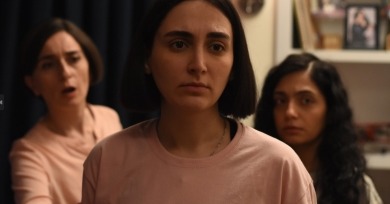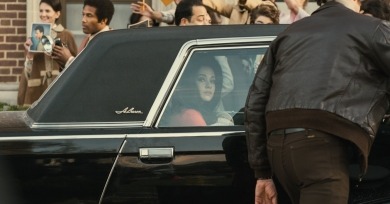A.G. Sims
Khalil Joseph asks the viewer to connect the dots between these places, figures, and events, both fiction and nonfiction, the point is not to figure it all out. BLKNWS is a movie to get lost in, like a hypnotic chopped-and-screwed tape.
Documenting the high-stakes Chocobar trial and unraveling the state’s deceptions requires a certain amount of linear and coherent storytelling, which Martel has traditionally resisted in her films.
Gavagai is a film about what happens when a European with good intentions tries to make a film set in Africa. His Matryoshka-esque films seek to question the inescapable racial hierarchies wrought by the violence and bloodshed of colonialism. But this film feels more like a bloodletting.
Mohammad Rasoulof is part of a rich legacy of courageous Iranian filmmakers who have bravely challenged the authority and inevitability of the Islamic Republic, through resistance films that have often left them exiled from the homeland and people their art is fighting for.
A Few Great Pumpkins
Bram Stoker's Dracula, The Mask, Arrebato, The Stuff, Cuadecuc, vampir, Tall Shadows of the Wind, Drag Me to Hell.
The films of Sean Baker, collectively approaching something like a sexploitation genre unto itself, seem to be trying to split the difference between Hollywood and raw grassroots guerilla cinema, landing on a kind of pop realism that feels aesthetically uniquely his, if hollow at the core.
This slow-burning psychological drama is not so concerned with indicting its main character as it is in using the accumulation of detail over its 197-minute runtime to build a damning portrait of a misanthrope blind to the dark corners of his own interiority.
What Deadwyler perhaps achieves most impressively in her portrayal, which she has said is drawn primarily from Mamie’s memoir, but also archival footage and photographs, is to conjure a feeling beyond the image, of Mamie’s suffering and maternal strength, without turning her into a folk hero.
The writer-director details the obvious: our systems are inherently self-defeating and defined by exploitation, no matter who’s at the top of the food chain.
One unifying concept ties it all together, Faraut believes, and that is the idea of time and the ability of a good director and a good tennis player to sculpt within it. His ideas are deeply rooted in the theories of Serge Daney.
Eribon aims to dignify working people, who he thinks have been ridiculed socially and taken for granted by those on the left, who once claimed to be their advocates. It is clear that he blames himself as well.
Lee has never been any more obsessed with race than the country he has vigorously documented over the course of his multi-decade career. The ideas he explores and the stories he tells about the myriad of black experiences seem excessive only in a canon that all but ignores them.
Reichardt’s hushed visual approach animates the movie into something more contemplative than its sweet, humorous screenplay might indicate. In her films, characters tend to look at things and think. A diegetic bird squaw might fill the silence, or a plucky banjo. In those moments, the object gazed upon becomes imbued with meaning.














